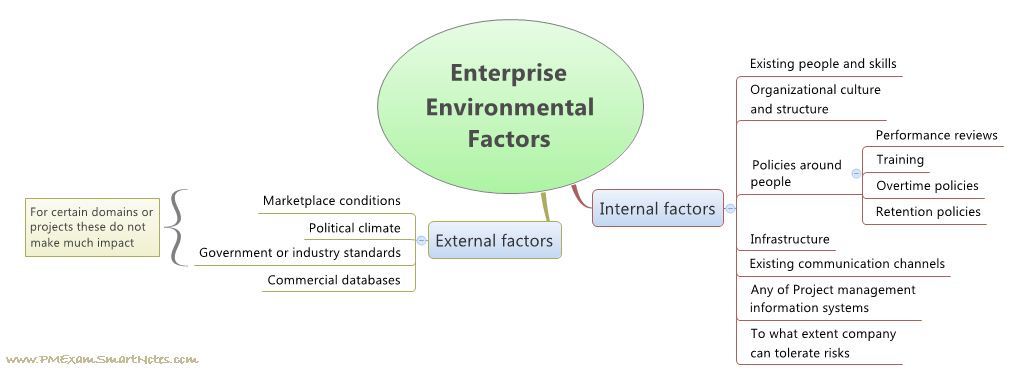
Okay, let me give it out straight away.
Enterprise Environmental Factors (EEF) and Organizational Process Assets (OPA) – are two inputs that appear in quite a few processes.
Rightly so.
Because both are part of the environment in which a project is undertaken, and just like people a project also is shaped by its environment.
These are very important aids for the project manager, they make her life so much easier!
Enterprise Environmental Factors (EEF)
We all live in and depend on some kind of environment. At home, we have a ‘family environment’, and with friends we have a ‘cool environment’. Multinational companies look for a favorable political and socio-economic environment to conduct business in a country. And of course, we all depend on clean, pollution free environment to have a healthy living.
Similarly, every organization has an environment that can greatly influence – positively or negatively – the way projects are managed and their outcome.
Enterprise environmental factors can be segregated into internal and external factors –
Figure 1: Enterprise Environmental Factors
External factors such as government standards affect certain projects – for instance, an automobile manufacturing company needs to adhere to certain emission standards set by the government. Another example would be that healthcare system of a hospital that maintains patients’ data has to comply with HIPAA compliance standards. Some types of projects are not impacted as much, such as a web based software product to help manage students information in a university.
As a project manager, you need to figure out which external environmental factors need to be considered before you start planning for the project. And a good place to start on this is the Project Charter.
Organizational Process Assets (OPA)
‘Assets’ by definition are things of value that people or companies own. In the context of a project these are the things like standard templates, lessons learned from similar projects executed earlier.
Process assets are created and managed by organizations, and here are some examples –
- Lessons learned from earlier projects
- Project templates (such as project plan, system specifications and proposal)
- Policies
- Standard operating procedures
- Risk register
- knowledge database (such as estimating data and standard resource costs)
- Completed schedules from earlier projects
As a project manager, you will save lot of time and get a head-start by looking into your company’s existing Organizational Process Assets. As project progresses you will log all the lessons you are learning into company’s knowledge repository, thus building OPA further. This will be useful for other project managers and project management teams in the company.
Broadly, organizational process assets are grouped into two categories –
- processes and procedures
- corporate knowledge base
Relax. It is not necessary to try to remember all processes that these two are going to form inputs. As you understand more about each process, it becomes apparent where one or both of these are required to be inputs.
Now it is time to see who are the stakeholders in your project. You may discover few missing stakeholders in your own project after reading next few lessons!




